How to measure Diversity and Inclusion for a stronger workplace

Becky Cantieri
Chief People Officer
What you'll get from this guide
Free survey templates to diagnose culture
Customizable questions crafted by survey experts
Guidance from D&I leaders
Input from HR managers at startups, major enterprises, and speciality firms
Expert survey methodology
Strategies for timing, sending, and optimizing D&I surveys
A full quarter (26%) of employees don’t feel like they belong at their current company.

According to McKinsey, companies within the top quartile for diversity are 21% more likely to have good financial performance than companies in the bottom quartile—probably as a result of having a broader understanding of market needs. Diversity has also been correlated with higher rates of innovation. And companies are starting to pay attention.
Thirty-eight percent of the 12,543 working Americans we surveyed in 2018 said that it’s a high priority for their company, for business reasons and more importantly, for ethical ones. More and more companies have set diversity and inclusion related goals and committed to pursuing a more balanced workforce.
But unfortunately, these good intentions aren’t translating into employees’ real experiences. Many employees still feel that they don’t belong, and dozens of companies have made recent headlines for diversity and inclusion-related crises. In these workplaces, many female employees don’t feel respected (or sometimes even safe), minorities can be painfully underrepresented, people with disabilities often don’t have the resources they need to succeed, and so on.
No company wants to have a culture where not every employee feels like they can thrive, but it’s hard to address problems when you don’t know they exist. Without a way to measure inclusion, executives and HR teams have to rely on their own subjective perceptions of the culture at their organization—with varied level of accuracy.
But inclusion isn’t totally unquantifiable. If you want to know whether your employees’ experience aligns with your company’s ideals—at scale—you can just ask.

Surveys are the perfect tool for measuring the feelings and opinions of your workforce at scale. When used correctly, they can raise red flags about potential problems within your company that you didn’t know about (and would never have thought to check for), and they can uncover opportunities to empower employees through internal programs.
There’s a ton to consider when you’re building diversity and inclusion into a company-wide initiative. We’ve broken this guide into navigable pieces so that you can skip around and focus on the areas most relevant to your business.
From there, we’ll drill down into the specific areas where companies tend to struggle. You can read through all of them if you like, or skip to the areas that you think are the most relevant to your company, based on your results from the inclusion survey.
Then, we’ll cover different actions you can take to create change—including policies, programs, and strategies that promote diversity and inclusion. These strategies, which we’ve classified as either diversity-focused or inclusion-focused, are useful for every business.
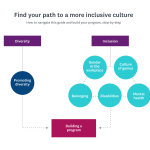

Part 1: Measuring diversity and inclusion in your workforce
Get a baseline read on your company’s diversity metrics and company culture
In this section you'll learn:
If you’re reading this guide, you already know that diversity is important, and you might be responsible for promoting it at your organization. As an HR professional (or passionate advocate) charged with improving D&I, collecting diversity metrics is important. Comparing yourself over time to benchmarks helps you set new goals and clearly track your progress against them.
Diversity numbers tell you the overall makeup of your population, and which groups are underrepresented. The first step toward building an inclusive culture is understanding more about the humans already behind your workforce.
Diversity tracking seems like it should be straightforward, but if you really want to support your employees work toward a more balanced workforce, you need to think beyond traditional demographics—which really comes down to asking more than the obvious questions.
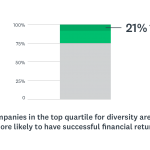
What is diversity? Redefining and expanding your current definition

True diversity means having people from all kinds of backgrounds and identities at every level of your organization. It means making a conscious effort to diversify teams and management, in addition to overall numbers. Diversity is especially important when it comes to hiring and advancing people from underrepresented groups.
The traditional concept of underrepresented groups includes women and people of color, but these are only a few of many internal communities with unique needs that require respect and support.
Does your organization include people with disabilities? People with different religious backgrounds? Members of the LGBTQ* community? Veterans? People over 60? True diversity is expansive, and the differences between people aren’t always visible.
That isn’t to say that hiring people of different ethnic backgrounds isn’t important. That’s still the area where businesses fall short. It just means that you need to be aware of those numbers in addition to some of the other areas that are typically overlooked.

When you have your results, you’ll know more about where to focus your hiring efforts and how to support the needs of the employees you already have in your workforce. You might also choose to publish some of your findings in an effort to be transparent and open about where your company is doing well or needs improvement. This is a great way to hold your org accountable for change.
At SurveyMonkey, we shared some of our diversity statistics for the first time publicly in 2017, and companies like Google, Coca Cola, and Michelin have done the same. Our annual diversity report gives us a benchmark to track against as we move toward our goal of achieving gender parity.
We recently had the pleasure of working with Aubrey Blanche, Global Head of Diversity and Belonging at Atlassian for our recent webinar, “Your toughest D&I questions answered.” Aubrey shared insights about how Atlassian—a famously inclusive company—thinks about diversity.

One mistake that companies often make when they first start thinking about D&I is that they don’t think intersectionally. Each of your employees has layers—lots of different identities. And when many companies start thinking about diversity they say, ‘diversity equals more women.’ And that’s a great intention, but sometimes that means you don’t think about different groups of women within that group. You only build programs that speak to straight white cisgender economically privileged women.
But when you start to think beyond “meeting diversity metrics” and start to think about building balanced teams, those are potentially your strongest opportunities for impact.
HBR research has proven that diverse teams perform better, but you only get those benefits if each team has a variety of different viewpoints represented. You can hit a certain number for gender goals, but if all your women and nonbinary people are in HR and marketing, you’re not actually getting the rewards.
At Atlassian, we’ve moved away from the language of “diversity” to actively acknowledge that people often have a multitude of identities—not all of which are obvious. Instead, we try to build teams that incorporate a wide variety of viewpoints so we can support a wide variety of customers and really thrive as a business. Our goal is always to give every unique viewpoint a voice, and make everyone feel like they are valued.

A note on asking about diversity demographics
Asking about race, gender, and sexual orientation in your surveys can feel personal and invasive, but respondents are rarely put off by them. The Census Bureau recently found that people are no more likely to skip these types of questions than any other.
People are conditioned to expect these types of questions from a survey, and as long as your options are “standard” or inclusive, you’re unlikely to lose responses just for asking. This applies to every template in this guide, not just the diversity survey. Don’t be shy about asking for demographics—even in HR surveys that aren’t directly related to diversity and inclusion. If you’re going to track D&I at all, they’re important to know.
If you’re worried about excluding anyone, include an “other” option in your demographic questions so that survey takers can write in their own identities.
We share more of our thinking around this and how to frame it for yourself in this blog post.
What is inclusion?

Where diversity is about variety, inclusion is about having a solid foundation for supporting employees and their different needs. Inclusion requires a culture where employees feel welcome, respected, and empowered to grow. Even the most diverse companies can’t be successful without inclusion.
“Inclusive” cultures don’t necessarily mean they are “fun.” In fact, companies that “work hard, play hard” can be decidedly non-inclusive. Instead, inclusive environments are nurturing and open-minded. Every employee feels that they belong and they have space to make mistakes and develop professionally.
Bringing metrics to the unquantifiable: How to measure inclusion
Diversity is easy to break down into metrics—hiring numbers, promotion statistics, demographics. But many companies neglect the “I” part of “D&I” and risk alienating and disempowering their employees. Hiring people from underrepresented groups isn’t enough—those new hires need to feel safe and respected, and they need to genuinely believe they can have a successful career path at your company. According to SurveyMonkey research, many don’t.
In July of 2018, SurveyMonkey partnered with Paradigm, a consulting firm that specializes in diversity and inclusion. Together, we created a survey template designed to investigate the many different layers of inclusion in the workplace. We used the template to survey 843 working Americans, and the results were telling:
- 44% of employees didn’t feel that they could express a contrary opinion at work without fearing negative consequences.
- 32% did not feel that their opinion was valued.
- 60% of employees say their compensation is fair relative to others at their company. But only 48% of Black workers agree with this statement.
- In every single case, the percentages were lower for people from the underrepresented communities that we checked for (women, Black, and Latinx.)
The business significance of these findings is profound. If employees are feeling stifled or disrespected, your retention will suffer and you may tarnish your chances to attract new hires. This type of environment will also affect your employees’ ability to perform—if people don’t feel empowered to voice contrary opinions, how can you trust that they’ll speak up about potential business mistakes? How many great ideas might never get raised? How many people may lose enthusiasm for their day-to-day work?
Many leaders have begun to argue that an inclusive culture is more impactful for retention than offering expensive perks. According to PR specialist Sarah Stoddard, of Glassdoor:
Employers need to work a little harder to find and retain talent. And when you boil it down to what employees are really looking for, it is traditional benefits with a strong company culture—one that really values employees.
The importance of inclusion is easy to understand, but the layers of company culture that make up “inclusion” aren’t. Unlike diversity, inclusion is heavily rooted in employees’ individual experiences—which aren’t easy to monitor or quantify. And perception of culture can differ dramatically from person to person. Leaders, for example, might see things differently than the people who work for them: Our research for Harvard Business Review found that 83% of executives think they encourage curiosity at work, but only 52% of employees agreed.
The only way to address inclusivity in your organization is to turn it into a company-wide conversation. Our Inclusion and Belonging survey template is a comprehensive evaluation that helps you understand the foundations of inclusion within your workplace.
Expansive but still relatively quick to take, it focuses on the three key aspects of inclusion, according to research by Stanford University researchers Carol Dweck, Greg Walton, and Geoffrey Cohen. Here’s what each means at the most basic level.
- Objectivity: Do people feel like promotions and policies are fair and transparent?
- Growth Mindset: Do employees believe that your organization supports their ability to grow, or do they think that their value is fixed, leading to a sense of stagnancy and de-motivation?
- Belonging: Are employees certain that there is a place for them—and people like them—at your company?
Together these three areas define your employee experience, and you need all three if you want employees to feel comfortable and empowered. Most of the common diversity and inclusion challenges occur when employees’ experiences of objectivity, growth mindset, or sense of belonging are compromised.
General tips for sending your D&I surveys

Diversity and inclusion-related questions can be sensitive, so there are a few ways that you can make your survey more comfortable for employees.
- Make responses anonymous—and communicate that clearly when you send the survey out. If employees aren’t comfortable associating themselves with a certain identity, knowing that they can keep their privacy may set their minds at ease. Note: This setting has to be enabled before you send the survey. It can’t be done after responses have come in.
- Make every question optional, so respondents can skip any questions they’re uncomfortable with but still participate in the survey.
- Be transparent about the reason you’re sharing the survey. Respondents might be more likely to share information about themselves if they know that their responses will help support diversity and inclusion.
- Be conscious of language. When you’re asking about sensitive topics, you’re asking respondents to be vulnerable. Non-inclusive language can inadvertently offend respondents and prevent them from answering honestly. We’ve included a list of common triggers and mistakes at the end of this guide so you can double-check your instincts. We’ve also included recent research on microaggressions so that you can better understand what employees might find offensive.
Understanding your results
Once you’ve finished your initial Diversity and Belonging and Inclusion surveys, you’ll be able to dig deeper into the parts of your culture where being conscious about D&I might be especially important.
The Diversity survey gives you baseline demographics, and the Belonging and Inclusion survey includes dozens of different dimensions for evaluating inclusion. Slicing and dicing these results can help you understand where you need to focus your efforts first.
The Inclusion template includes questions about demographics like gender, race, and age, so you can filter your results to see whether there are different answers among different groups.
When you’ve gotten a read on your company culture as a whole, it’s time to go deeper into specific areas of focus.
In part 2 of this guide, we cover some areas where companies commonly struggle with D&I along with specialized survey templates, advice, and/or original research to help you understand and address them. You can read each section, or go straight to the sections that are most relevant to your business.
You can also use the results of your Diversity and Belonging & Inclusion surveys to show you where to focus.
Map your Diversity survey results to areas of focus

Identify as female
If you have a high number of employees who identify as female, go to "Women in the workplace"
Skip to this section >Disabilities
If you have a high number of employees with a disability, go to "Disabilities at work" and "Mental health"
Skip to this section >Racial or ethnic minority
If you have a high number of employees from a racial or ethnic minority, go to "Culture of genius" and "Belonging and underrepresented groups"
Skip to this section >LGBTQ employees
If you have a high number of LGBTQ employees, go to "Belonging for underrepresented groups"
Skip to this section >Map your Belonging and Inclusion survey results to areas of focus

Gender
If you have negative responses when you filter by gender, go to "Women in the workplace"
Skip to this section >Learning and growing
If you have negative responses to questions about learning and growing (3, 9, 10, 17, 19), go to "Culture of genius"
Skip to this section >Race
If you have negative responses when you filter by race, go to "Belonging and underrepresented groups"
Skip to this section >Disabilities
If you have negative responses when you filter by disability, go to "Disabilities at work" and "Mental health"
Skip to this section >Authenticity
If you have negative responses to questions about authenticity (11-13), go to "Mental health"
Skip to this section >Part 2: Taking a closer look at common challenges with inclusion
Drill down into aspects of inclusion that are often problematic or confusing

Within the category of inclusion, there are opportunities to excel and places where company cultures tend to struggle. We’ve chosen to highlight a few areas where inclusion efforts most commonly fall short.
In this section you'll learn:
- Addressing questions of equality for women in the workplace
- Understanding a culture of genius—with input from Paradigm
- Belonging among underrepresented groups—with input from TEQuitable
- How to think about disabilities—with input from The Tech Disability Project
- How to prioritize mental health—with input from MindShare partners

Women in the workplace
Do women feel that they’re treated fairly?

Women are often underrepresented in their workplaces, and the struggle to achieve gender equality in pay, career opportunities, and overall treatment has been well-publicized.
There are many different sides to gender equality, and many companies fall short by focusing too closely on only the most glaring problems. But more insidious issues, like perceived disrespect and unconscious bias, can sometimes end up causing the biggest problems down the line.
The systemic repression of women at Nike was revealed to reporters at the New York Times in 2018 after an employee sent an internal survey asking women colleagues if they had been the victim of gender discrimination—though many leaders at the company claimed not to know about the situation. Since then, Nike has launched a major corporate overhaul, made changes to training and compensation programs, and committed to ensuring women equal opportunities. But if HR professionals had started asking questions earlier and taken the responses seriously, they would have been able to make proactive improvements instead of reactive amends.
To understand the experiences of women employees, raise nuanced questions. Don’t just ask “Do we have enough women here?” Instead, ask: Do women here feel safe, comfortable, and respected? Do they feel like they have equal career opportunities? Do they feel like they’re paid fairly?
Some answers are cut and dry (Are we hiring enough women?), but others are tougher to know unless you ask.
SurveyMonkey created a Gender in the Workplace survey template in partnership with Sheryl Sandberg's team at LeanIn.Org to help companies understand:
- How women (and people of other genders) are distributed within your organization (are there certain departments that skew one way or another?)
- Whether women are accurately represented in leadership positions (and whether employees perceive this to be true)
- Whether women feel that their ideas are fairly acknowledged and their merit is recognized
- Whether women think promotions, raises, and other opportunities are awarded fairly
- Whether employees believe that gender diversity is truly a value for your company and how your existing policies and programs are viewed
- Whether employees feel like they can maintain work/life balance
Asking questions about objectivity—whether people think your workplace is fair or not—can be scary. Will you provoke discontent by asking? But avoiding hard truths about employee perception won’t fix the problem. Instead, it gives you the fodder you need to make things right.
Sometimes culture problems are rooted in subjective perceptions—or misconceptions. For example, employees might believe that people from different genders are unequally compensated, even if that isn’t true at your organization. Even if it’s unfounded, that belief might create tension at the company and suggest that you need more transparent compensation policies.
Our Pay Gap template tells you, quickly and simply, exactly what employees think about compensation at your company. If you’re not willing to commit to the full Gender in the Workplace survey, the Pay Gap template can clue you in to sentiment around compensation at your organization.
Awareness about pay gaps vary. When we surveyed workers about the pay gap between white men and Latina women, 4 in 10 people did not believe that Latinas face racial discrimination. Unsurprisingly, Latinas were much more aware of the issue—51% said they’d experienced it personally. You need to understand the mindset that people have at your company so that you can address both those who feel wronged, and those who underestimate any disparity.
Addressing sexual harassment in the workplace
Sexual harassment is complex, and often deeply emotional, to communicate through a survey. We don’t recommend using surveys to ask about it, so we don’t have a template for it. Why? Because sexual harassment is best addressed directly with the person impacted—not studied as an aggregate of anonymized data. You’re legally obligated to take accusations of sexual assault and harassment seriously, and surveys simply aren’t appropriate.
At SurveyMonkey, we provide employees with an escalation toolkit that details the process for recognizing harassment and lodging a complaint, and explains how it will be dealt with. We also have an Integrity Hotline—an anonymous service through which employees who don’t want to go on record can anonymously report breaches of SurveyMonkey policies or values.
The Society for Human Resource Management (SHRM) published a public guide to help companies create, articulate, and enforce sexual harassment policies. Here’s a summary of their recommendations:
- Make sexual harassment policies public and ensure that every employee reads them.
- Explicitly forbid: rape, physical assault and inappropriate touching, sexual comments, jokes, gestures or remarks, unwanted sexual advances, preferential treatment in exchange for sexual activity, discrimination, and retaliation against people who lodge complaints.
- Employees can either address those who harass them directly, or bring the issue to HR, depending on their comfort level.
- It is HR’s responsibility to document the incident, collect notes, and communicate with both parties as soon as possible. Make sure to emphasize the severity of sexual harassment when talking to the subject of the complaint.
- Take immediate steps to make sure that the behavior doesn’t happen again.
- Report illegal incidents to police immediately.
- Conduct an internal investigation as soon as a complaint is lodged, and consider engaging an outside firm. If the accused person is VP level or above, you should use an external third party.
- Communicate any corrective actions to both parties.
Many companies fall short by only paying attention to major violations like sexual harassment and assault, but the cultural problems that lead up to them are equally harmful, and much less obvious. Sexual harassment and incivility in the workplace more broadly is more likely to exist in environments where aggressive attitudes are normalized through shared humor or assumptions. Both the Gender in the Workplace, and Inclusion and Belonging templates can help you identify whether this type of culture exists at your company. If it does, it might be time to institute some workplace behavior training and/or clearer anti-harassment policies.
Culture of genius
Do you have a growth mindset or a culture of genius?

The term “culture of genius”, coined by Stanford researcher Carol Dweck, sounds deceptively positive. But a culture of genius is one where leaders assume (or employees believe that they assume) that workers’ value or skills are fixed—which means employees don’t grow, improve, or add more value in their employer’s eyes.
1 in 5 U.S. employees (21%) say their company believes that people have a certain amount of talent and they can’t do much to fix it. That culture of genius can prevent feelings of belonging and growth, especially for groups that are already in the minority: Nearly 3 in 10 Black and Latinx employees (28% versus 17% of white workers) believe that people in their company have a “culture of genius.”
A company’s culture can vary by department, team, or even role. “Culture of genius” isn’t something that most HR pros intuitively look for, even if they’re focused on diversity and inclusion. But it plays a major role in defining employee experience.
Some red flags indicating you have a culture of genius:
- You use words like “rock star” or “mastery” in job descriptions and focus on candidates’ ability to execute flawlessly instead of learning quickly or collaborating to find solutions.
- Your company does one-directional, top-down feedback in annual reviews in lieu of ongoing conversations where the employees get to participate in setting goals and discussing their progress.
- You have high burnout rates and turnover.
- Employees have vocalized interest in training programs or other professional development tools, and you haven’t been able to offer them.
- Promotions at your company are inconsistent.
- People from underrepresented groups tend to shy away from applying to your company.
If you’re not sure whether or not you have a culture of genius, you can use this template to better understand how employees feel.
In spite of the damage that a culture of genius can do, it’s not necessarily an insurmountable problem to have. A few straightforward changes can make a big impact.
At SurveyMonkey, we’ve moved away from annual reviews and instead instituted a program that we call “GIG.” GIG stands for Growth, Impact, and Goals. We hold GIG conversations quarterly, and they aren’t tied to compensation. We also ask the employee being reviewed to lead some of the conversation rather than passively receiving feedback. By having these conversations more often and emphasizing growth, we’re trying to transform typically stressful performance reviews into clear, timely, useful conversations that inspire employees to continue their personal growth.
Belonging and underrepresented groups
Are employees of different cultural backgrounds, races, and sexual orientations comfortable among their peers?

Belonging is one of the hardest parts of inclusion to influence. You can’t usually change how welcoming employees are to one another, and the same words or actions might be considered hostile, neutral, friendly, or too friendly, depending on who you ask.
Cultural sensitivities vary, and some of your employees might have backgrounds or ideologies that are directly at odds with one another. Your job as an HR person is to balance each group’s desire to “bring their authentic selves to work” with appropriate workplace behavior.
Your job as an HR person is to open a dialog and engage employees in creating the kind of workplace where everyone is treated fairly and respectfully, has equal access to opportunities and resources, and can contribute fully to the organization's success.
Because individual actions are ultimately up to each employee’s discretion, it’s important to identify and educate your employees about which ones promote inclusion and which don’t.
To explore this idea, we recently did some research about one of the more difficult elements of non-inclusive behavior to qualify: microaggressions.
What are microaggressions?
Microaggressions are indirect, sometimes subconscious words or actions that make someone feel attacked or uncomfortable—often as a result of their identity.
Microaggressions are challenging because it’s not always clear what to do about them. A company called tEQuitable uses technology and expert guidance to help address this. TEQuitable provides a confidential platform for employees to get advice when they are made to feel uncomfortable in the workplace. They anonymize and aggregate these reports into trend data and create actionable recommendations for companies to prevent bias, discrimination, and harassment. TEQuitable helps companies address problematic behaviors before they escalate and become more severe.
We asked them to share their thoughts on how to identify and address microaggressions to create a culture of belonging.
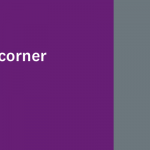
What are the most common issues that come up?
Many of the stories reported on our platform could be considered microaggressions. They include stereotyping, tokenizing, or making assumptions about someone based on their race, gender, sexual orientation, age, religion, or other aspects of a person’s identity. There are limitless ways for microaggressions to manifest. Here are just a few that have come up.
- Doing imitations of accents
- Making assumptions about someone based on clichés about their country of origin
- Mistaking someone for someone else of the same race
- Asking someone to speak on behalf of everyone from their racial group
- Suggesting that someone can’t be a certain way because of stereotypes about their identity (e.g. female engineers can’t be fashionable, gay men can’t be masculine, older people can’t be tech-savvy).
- Casual touching—not an explicit sexual violation, but nonconsensual
- Speaking over or belittling people in meetings, especially women or other underrepresented groups
- Inequitable distribution of work, whether that’s high profile projects or “office housework”
Microaggressions can affect people from every demographic, but they tend to affect employees from underrepresented groups the most. Microaggressions can also have a more painful impact if the recipient already feels “other”, because that person already senses that they don’t belong. The effect is incredibly disempowering.
How should companies think about microaggressions?
Microaggressions usually aren’t a conscious choice. Most people don’t wake up in the morning looking for ways to be a jerk. There are a few factors that come into play: ignorance and lack of education about the right way to behave and hesitation to ask questions. Even people with good intentions might not understand how their words and actions could be offensive or ask questions to increase their understanding.
Here’s what companies can do to educate and create a safe space.
- Create psychological safety for addressing these issues without blame. The message should be: “it’s okay to make mistakes as long as you learn from them.” Encourage employees to speak up and build awareness in the moment.
- Introduce education and resources. Share articles and books, create discussion opportunities, role plays, and workshops. Make some trainings required and others optional.
- Lead by example. Recognize and celebrate people who are living your inclusion values.
Sometimes bias can seep into company systems and processes, which ends up perpetuating the problem. If you fix the system by establishing practices that prevent unconscious bias from creeping in, you can prevent the behavior from occurring.
- Create clear, unambiguous rubrics for promotions and job responsibilities that don’t bias toward a certain personality type, cultural norm, or prescribed path. Be transparent about these standards.
- Offer deliberately equitable career development processes, with equal access to resources.
- If there are shared “unglamorous” tasks like office duties or taking notes, create a rotating system so that the responsibility gets shared.
- Create meeting guidelines that encourage everyone’s voice to be heard.

Disabilities at work
Do people with disabilities believe that they can thrive at your company?

You asked about disabilities in your diversity survey, and the number that you got back was higher than you expected. Or, the people who do have a disability are less happy than their able peers. You’re not alone.
A few numbers, for context:
- One in four adults in the U.S. has a disability of some kind.
- Over 70% of disabilities are “invisible,” meaning that they aren’t obvious from looking at or talking to the person.
- People with disabilities are paid 7-13% less than their abled peers.
When it comes to diversity, people with disabilities tend to be overlooked—but they are also an indispensable part of your company. We interviewed Natasha Walton, founder of Tech Disability Project—a publication featuring stories by disabled tech workers—to gain some perspective. Natasha talked about what companies do well, what they overlook, and how they should communicate about disabilities in the workplace.
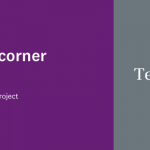
SurveyMonkey: Should you ask employees about their disabilities, or wait for them to bring it up themselves?
Natasha: Companies should proactively advertise their commitment to providing reasonable accommodations to both employees and interviewees. It’s important to focus the conversation on what the individual needs, not why; ask questions to determine what the employee may need to do their best work rather than inquiring into their medical history.
Remember that 70% of disabilities are invisible and disabilities may develop or change over time. Your accommodation process should cater not only to candidates and new hires, but to existing employees as well.
Note: Have you met internal resistance when advocating for hiring people with disabilities? Or been hesitant to ask employees about accommodations they may need? Many companies worry that hiring people with disabilities will come at a high financial cost. Actually—the opposite is true. Half of requested accommodations don’t cost the employer anything, and the average cost of accommodations that do have a cost is only a few hundred dollars.
Disabled employees can offer rare perspective into what matters to disabled customers and other consumers. The discretionary income of working-aged disabled people is a 21 billion dollar market—a huge opportunity for companies to tap into.
SurveyMonkey: What do companies tend to overlook when it comes to supporting disabled employees?
Natasha: In general, companies tend to forget that every employee is a unique individual with differing access needs. When employers enact rigid policies that require all employees to work in a similar way, it fosters a non-inclusive, inaccessible environment. This type of culture can make disabled employees feel as though they need to hide their disabilities and access needs, putting increased stress and pressure on those individuals and preventing them from bringing their whole selves to work.
Many people with disabilities need flexibility when it comes to hours and location, allowing them to work from home if and when they need to, or to go to appointments during the workday. But that’s far from standard, even in roles where the majority of the work is digital. When companies require employees to dip into PTO for mental health days or appointments, it disproportionately affects people with disabilities.
Then, there’s the issue of privacy. Are employees expected to broadcast the reason why they are missing a meeting to their team? This norm unnecessarily burdens people who have a lot of appointments or need to take a mental health day. It’s understandable that coworkers would want to know whether their colleague is available, but there’s no reason that they should have to divulge the details of their medical life.
Another common thing that companies overlook are offsites. Even if the main office is accessible—is the offsite location? Are the bonding activities something that every member of the team can participate in?
All of these issues can be successfully addressed with more flexible policies and sensitivity training for management-level employees.
SurveyMonkey: What can companies do to support their disabled employees?
Natasha: Beyond offering an accommodations process and flexible work policies, offices can provide noise-free work areas and private resting rooms. Quiet can be really important for many people with disabilities (as well as non-disabled employees) and is a scarce commodity in open-plan offices. If an employee has a panic attack or a muscle spasm, needs to adjust a prosthesis or needs to lay down for a few minutes, a private resting room is an extremely valuable resource.
Normalizing self-care and educating employees about how to discuss disability are important as well. Encouraging mental health days will end up serving the entire employee base. People with disabilities are constantly asked inappropriate questions from coworkers about their bodies and mobility devices. We should be able to go to work and put forth our best effort without needing to explain our disabilities or accommodations to every curious colleague.

Mental health
How is mental health treated in your workplace?

When companies prioritize mental health, it pays off. Accenture research found that employees from companies that prioritize mental health are twice as likely to love their job and more likely to stay longer. Healthier employees are better set up for success and more likely to infuse confidence and positivity into your culture. But everyone struggles with mental health sometimes, and consistent issues are more widespread than you might think.
In a recent survey of over 2,000 employees, almost 45% said anxiety or depression hurts their productivity in the office, and nearly 1 in 5 (18%), said that it happens often. Mental health challenges are relevant for employees of every company.
But as common as these issues are, they still aren’t talked about openly. Old taboos around mental illness still have legs in the workplace, where people seem to conflate emotional equilibrium with professional capability—or fear that others will. This becomes a problem when employees don’t feel they can talk about the situation or work toward a solution.
Our research also found that young people and racial minorities are more likely to struggle with anxiety and depression—which makes sense for groups that tend to face higher scrutiny.
People struggling with mental health issues tend to either feel like their challenges aren’t valid or that they’re too personal to talk about. Fewer than half the people in our survey said that they’d be willing to take a day off for mental health reasons, and among those who would, only 15% would give the honest reason.
For more context about the challenges—and opportunities—of mental health in the workplace, we talked to Mind Share Partners—a nonprofit changing the culture of workplace mental health so that both employees and organizations can thrive.
Mind Share partners with leading organizations to support employees with mental health conditions through workshops, education, and consultation. They’ve partnered with major companies like SAP and Pandora, as well as smaller companies, and have seen a gamut of different systems and company cultures. Here are some of their takeaways.
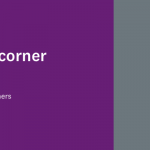
Why is mental health so important from a business perspective?
Up to 80% of Americans will have a mental health condition at some point in their lives. Despite their ubiquity, mental health stigma is especially prevalent in the workplace where it remains a taboo topic. 8 out of 10 employees report this stigma as a barrier to getting treatment.
Studies show that untreated mental health conditions result in a wide variety of business costs, including more short-term disability, safety incidents, time out of work or absenteeism, underperformance and presenteeism, stress, overstaffing to cover absences, and hiring costs for burnout and attrition. U.S. businesses lose $17 billion and 217 million days are lost annually in workplace productivity due to mental health conditions.
Workplaces present both a challenge and an opportunity in mental health. They’re a challenge because workplace factors such as job strain, lack of control, and unsupportive managers can trigger or exacerbate mental health conditions. Coupled with pervasive stigma, this is a massive detriment to employees seeking help.
However, workplaces are also an opportunity. The time people spend at work is an unmatched chance for change that helps an employer’s culture and bottom line. Organizations that commit to supporting employee mental health see a 4:1 ROI in increased productivity and engagement, and become more desirable places to work.
Mental health is the next frontier for Diversity & Inclusion. The individuals facing mental health challenges are already at your company, but struggling in silence due to the prevailing stigma at work. To shift our country’s cultural dynamic, companies need to lead the way. Organizations that create a supportive mental health culture will do good by their employees and by their bottom line.
What can companies do to take the stigma out of mental health and promote wellness?
Leverage continuous, immersive, and action-oriented education. In our workshops, we teach companies to name, normalize, and navigate mental health at work. We debunk commonly-held myths, share stories, and offer concrete strategies to create a company-wide understanding of the prevalence and impact of mental health at work and ways to support it.
These types of workshops and follow-on discussions equip companies to create a psychologically safe team culture.
Provide the right resources. Mental health benefits, EAPs, and workplace perks (like free meals, meditation rooms, and ping pong tables) are increasingly common. But these resources are used at alarmingly low-rates and don’t directly address the culture of stigma in the workplace.
One really successful tactic we’ve seen is the creation of mental health employee resource groups at companies like Johnson & Johnson, Verizon Media, and Squarespace. We’ve also seen successful solutions like flexible working hours, time for therapy, and structured check-ins with managers.
Finally, internal trainings or meetups where employees can learn and talk safely about mental health at work lead to a more open culture around mental health challenges.
Another key piece is leadership buy-in. You need vocal support. Leaders are culture-setters at their organization. You can have programs and resources in place, but research shows that employees are reluctant to use company benefits unless they see that their supervisor and company as a whole support their use.
At a recent workshop, a senior executive shared a personal story about their experience with mental health. In just a 10-minute share, the executive signaled to the rest of the company that it was okay to have these experiences and opened the door for further conversations about mental health.

If you’re worried about how employees perceive mental health, or aren’t sure whether your company does enough to support employees’ mental health, ask yourself these questions:
- Does mental health or related issues appear in our handbook?
- Do we have explicit policies about mental health days?
- Do managers at my company know how to deal with mental health issues? Is it a part of their training?
- If an employee had a mental health issue, would they have resources with which to address it?
- Are our mental health programs or policies publicized and available to all employees?
- Have employees felt comfortable raising mental health issues in the past?
If the answer to those questions is no, it might be time to reevaluate your company’s position on mental health, and consider one of the solutions Mind Share suggests.
Part 3: Actions you can take to support diversity and inclusion
Strategies to attract and empower underrepresented groups and help employees thrive
In this section you'll learn:
How to promote diversity in your workplace

You have your diversity survey metrics, you see the gaps, and you’re worried. But your candidate pool hasn’t changed—so how do you create a more diverse workforce? If you’re not getting interest from qualified candidates from underrepresented groups, the first step might be to consider your pipeline.
Here’s how:
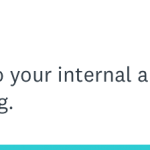
If you want to be viewed as an inclusive employer, position yourself that way. You can use statistics or quotes from your diversity or inclusion surveys to make D&I part of your employer brand.
Ideally, take out advertising space in publications that cater to underrepresented groups. If your budget allows, taking out ads in publications like The Root, Out Magazine, Al Dia News can put your brand in front of the diverse audience you want to attract.
If that’s not an option for you, then simply changing the way that you present yourself as an employer can make a difference. SurveyMonkey has a page devoted to diversity and inclusion, expressing our company values and inclusive programs and policies. We want potential employees and customers to know what we value and why.
This is an area where you’ll want to be especially conscious of avoiding a culture of genius. Look at your public values and job descriptions—both on your website and job boards. Just changing a few words can radically change the way that both employees and candidates view your organization. In one study, men and women were each shown job descriptions that—otherwise equal—expressed either a culture of genius or a growth mindset. Women were significantly more likely to apply to the businesses that focused on growth.
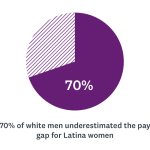
If you’re not sure what makes you a desirable employer from a D&I perspective, think more holistically about the opportunities for growth at your organization—these may appeal to underrepresented groups, even if they’re not explicitly focused on empowering a certain identity.
You’ll also want to emphasize the importance of diversity among employees. Encourage your people to refer candidates from diverse backgrounds, and consider altering your referral bonus to promote diverse hiring. The more people you bring into the effort, the more opportunities you’ll have to diversify.
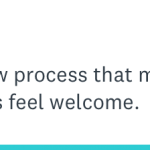
Recently, SurveyMonkey started an ambitious diversity-focused recruitment campaign. As part of it, we’re making an effort to ensure interviewing panels (the people candidates talk to as they go through the hiring process) reflect our diverse employee population.
The goal is to show potential candidates that there is a place here for people of a variety of different backgrounds, and that everyone can thrive. It’s a relatively simple thing to implement and keep in mind, but it might make a big difference for candidates who are on the fence.
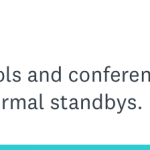
If new college graduates are part of your talent pipeline, take a look at colleges with a strong representation of racial minorities and other underrepresented groups. Spelman College, Howard University, and Florida A&M are all historically Black colleges with strong academics. Colleges with high populations of LGBTQ students include Tufts, MIT, and UCLA. CSU Los Angeles, Florida International University, and St. Mary’s University of San Antonio all have high LatinX representation.
22% of Black college graduates chose a HBCU as their alma mater, and according to a Gallup poll of thousands of students, their education gave them the tools they need to thrive. Yet, most companies choose to recruit elsewhere, missing the opportunity to access a huge talent pool and add fresh energy and diversity to their workforce.
Last year, Google announced an expanded plan to recruit from HBCUs. Hopefully, other companies will follow suit.
There are also tangible actions you can make to show potential future employees that your company cares about giving them a comfortable place to work. Two changes that can make a major impact:
1. Create a physical space that appeals to a diverse community. The way that you structure your office space conveys your company priorities. Some planning decisions are more expensive than others, but each sends an important message. It can also just be a question of publicizing things that you already have.
- Make space for a breastfeeding room for mothers.
- Ensure that the building and common areas are accessible to people with disabilities.
- Dedicate a conference room for prayer or employee group meetups during certain times.
- Create gender-inclusive labels for the bathrooms that say something like, "Use the restroom that most closely aligns with your gender identity."
- Create private spaces that people who struggle with anxiety or other mental health issues—or who simply need a break—can utilize for a while.
- Ensure that your branding and conference room names are inclusive and non-offensive.
- Research from the software company Steelhouse and architecture firm Gensler has shown that physical space has a significant impact on employee well-being—and that only 1 out of every 4 workers is in an optimal work environment. But making a few changes could make a measurable difference on employee happiness and your currency as an employer.
2. Set hiring and leadership diversity quotas. Many leaders, including Lesbians Who Tech founder Leanne Pittsford, have called for the use of diversity quotas, arguing that relying on “good feelings alone” does not lead to change. Diversity quotas don’t solve the whole problem, but they’re a great place to start.
Underrepresented groups can’t really thrive if they don’t see a successful path forward reflected in management. Homogenous leadership hurts retention, recruitment, and the sense of belonging that keeps people from underrepresented groups engaged at their jobs. Yet, white men still fill nearly 70% of director positions on Fortune 500 boards—and in 2018 we hit the lowest concentration of Black executives since 2002.
There’s a lot of room for improvement here. The state of California now legally requires companies above a certain size to have at least one woman on their board of directors—a tiny step, right? But that law will affect over 100 companies. Even businesses with the best intentions drag their heels when it comes to making change.
At SurveyMonkey, we set a goal of having a 50/50 gender split on our board—a goal that we achieved in 2018. We’re still working toward our other Diversity and Inclusion goals, but using hard numbers to hold ourselves accountable has been a first step toward tangible change.
You yourself may not have the authority to weigh in on high-level hiring decisions, but if you can argue your case with executives or others who do, you could make a major positive difference. If your leadership right now doesn’t include diverse representation, that’s a red flag. It’s your job to point it out.
How to promote inclusion in your workplace

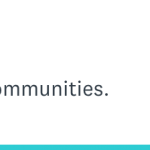
When you know more about who your employees are, you can also start to find communities with common identities and values. Then, you can set up Employee Resource Groups, or ERGs. Employee Resource Groups are voluntary groups led by employees, and their success heavily depends on how much power they’re given, the resources allotted to them, and the enthusiasm of their participants.
When should you start to think about ERGs?
Many ERGs are only established through grassroot efforts when employees proactively seek approval from management. To help, HR professionals can lay the foundations for successful ERGs by setting up a process for establishing them and being clear about what they can offer. If you don’t already have ERGs in place at your company, meet with leadership to understand how much funding you’ll be able to allot to these types of groups and what other resources (meeting spaces, etc.) you can offer.
When you know what you can offer, promote the opportunity across internal channels. Offer instructions for setting up an ERG on your company intranet or include a note in the company handbook.
The results from your diversity survey should give you some insight into the types of ERGs that would benefit your community. If there’s a significant number of people from a certain underrepresented group—or a notably small number of people from another—those could be good groups to start with. Ultimately, employee enthusiasm is the only way to know which groups you should move forward with.
A 2-question survey should tell you everything you need to know to decide whether there is employee interest in an ERG certain identity. 1) Are you interested in joining? 2) Are you interested in leading?
Ultimately ERGs are driven by employees, but it’s up to HR to give them the tools to get started.
What do you need in order to create an ERG?
Above all else, you need enthusiastic employees to lead the groups. ERGs are empowered by the fact that they’re self-driven, and you need passionate employees to take on leadership roles. If you aren’t sure about your employees, put out feelers to see if you have people who fit the bill.
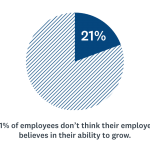
You also need an accessible first step—SurveyMonkey has an internal page that explains what types of employee resource groups are supported and a portal for making requests.
When the group is established, you need space, meeting times, and a clear way to communicate. Email aliases or dedicated channels on your company messaging service are great places to start.
What to avoid when thinking about ERGs
Although HR leaders do need to give employees the tools they need to start an ERG, it’s not your place to start one without eager participants. If you force it and, for example, proactively start a group for the five Black employees at your 400 person company, you risk tokenizing those people and making them even more uncomfortable. Employee resource groups are, first and foremost, a platform.
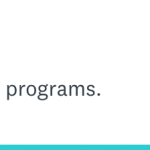
Mentorship plays a key role in combating a culture of genius and helping people of underrepresented groups be consistently successful at your company. There are many documented examples of why mentorship is important:
- According to researchers at UC Santa Cruz, mentoring programs for new teachers returned $1.50 for every $1 spent.
- Evidence suggests mentorship programs help with recruiting, retention, leadership skills, and diversity.
- 84% of CEOs said mentors have helped them avoid costly mistakes.
- 71% of Fortune 500 companies have mentoring programs designed to help their employees thrive.
The tricky part is uncovering and pairing those who would like to be mentored and those who want to mentor. You also need to help both parties understand what “mentorship” really means at your company. Mentorship programs that are allowed to grow stagnant don’t work. This is especially pressing if you’re building mentorship around a shared identities like gender or race.
If you don’t have a mentorship program in place at your company, certain employees or teams might still have organically created mentorship roles. At the same time, you might also have a program in place that no one is using. The first step to building a stronger mentorship program is understanding where mentorship at your company currently stands.

-Whether employees have existing mentors inside or outside of the company
-Whether there is demand for mentorship within underrepresented communities
-Which mentorship communities exist in your company already
-Whether there is opportunity for fresh advocacy programs
Mentorship is a huge professional advantage, and unequal access to quality mentors is a major problem when it comes to building a diverse and inclusive workforce. NextPlay.ai is a mentorship software and mobile app that pairs mentors and mentees within an organization based on goals and shared outlook, and walks them through the first stages of mentorship.
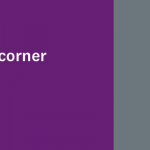
While mentorship can seem straightforward on the surface, there are advantages to thinking outside the box, and common challenges that savvy companies can work to avoid. NextPlay.ai’s Co-founder and CEO Charu Sharma shared some best practices for both, and explains how her company has created a program to help both individuals and their employers thrive.
Companies should facilitate mentorship programs—not rely on individuals to find help themselves.
There are a whole host of reasons that companies should think about creating mentoring programs. First the obvious: they give mentees the opportunity to grow and evolve—which makes them both happier and more valuable employees. Mentors learn valuable teaching and leadership skills.
Expecting employees to find their own mentors is problematic for both the individual and their employer. People who don’t feel like they can access a mentor within their organization are more likely to look elsewhere, which might ultimately lead to loss of talent if those employees decide to follow their mentors elsewhere.
Relying on personal networks also inherently disadvantages people from underrepresented groups. People who didn’t go to a certain school or look a certain way are less likely to have access to advisors who can help them. Mentorship shouldn’t be a matter of privilege—it should be something that anyone who wants to grow should be able to pursue.
When pairing mentors, resist the urge to think about hierarchy. Instead, focus on goals.
When mentorship programs start out, the temptation is typically to pair junior members of a certain team or department with more senior leaders in the same space. But we’ve found that asking people about their goals is a better way to do it.
Why? Because sometimes the most rewarding combinations can come from peers, or through “reverse mentorship.” Maybe a CMO wants to learn more about how content marketing works, or a director wants to get a better grasp on social media. Mentoring can also be a good way to hone leadership skills.
Some of the most valuable relationships we’ve created have been through cross-functional pairings. One salesperson that Nextplay.ai matched with a leader on the product team helped the company identify a million dollar market opportunity. Getting different viewpoints is the best way to create innovative solutions.
The CEO of JP Morgan, Jamie Diamond, famously advocates for talking to younger people. The benefits of having a diverse company also apply to diverse mentorships.
Provide guidance and easy pathways to connection—at least early on.
We’ve found that the best meeting cadence for most professionals’ schedules is once a month. When people using our platform meet up for the first time, we offer some recommended prompts (What is your background? Where did you grow up? What are your long-term and immediate goals?) Those prompts evolve as time goes on.
When mentees don’t have a structure to draw from, we found that they would avoid scheduling meetings out of fear of not knowing what to talk about and/or wasting their mentor’s time.
We also send mentors notifications when their mentees tick off an accomplishment that the two of them talked about. Mentorship programs need to establish a sense of continuity. That might be a standing check in email reminder, internal events for mentors and mentees, or anything that keeps them feeling connected.
One of the mentees in our program went on to become the first woman to be promoted while on maternity leave. The impact that mentorship has is powerful—and lasting. It can establish confidence that lasts throughout the mentees career—which is especially critical for people from underrepresented groups.

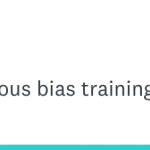
An easy way to promote inclusion and nip hostile attitudes in the bud is to require employees to take implicit bias training once a year.
Unlike explicit bias, implicit bias can be largely subconscious and unspoken. It includes nonverbal interactions and is usually based in people’s automatic associations. A now famous study from Georgia Tech found that job applicants with traditionally “Black-sounding” names received 50% fewer callbacks than equally qualified applicants with “white-sounding” ones.
Implicit bias can affect employees of any rank, education, and background, but awareness can help mitigate the damage and make employees more generally considerate.
Starbucks recently temporarily closed 8,000 stores for a training that they developed with the Anti-Defamation League, the NAACP Legal Defense and Education Fund, and the Equal Justice Initiative. You can develop your own training with expert input, hire a firm, or use an online course like this one from Catalyst.

A less common but uniquely empowering way to bring your employees together around inclusive principles is to let them weigh in on policy and corporate giving. Few companies think to ask about things like which charities to support or whether to offer yoga instead of happy hours.
SurveyMonkey has made extensive changes based on employee feedback, including changing our benefits programs to better support our employees’ values. This tells employees they are the ones who define our company culture. We use the phrase “You happen to SurveyMonkey” to encourage employees to make an impact.
A study by Tiny Pulse found that transparency is the factor most strongly correlated with employee happiness. Employees need to feel like they’re in the loop on major company changes, but they also need to feel like the conversation goes both ways. Show employees that you’re listening by surveying them about benefits or corporate social responsibility programs.
Our CSR survey template gives detailed options from which employees can choose the areas they’re most passionate about. The survey also helps you understand what type of giving makes the most sense to your people (donations, volunteer activities, etc.) The template covers areas ranging from diversity and inclusion to environmental concerns to humanitarian aid. You can tailor it to reflect your company’s core values or mission statement.
Hitta fler resurser

HR-ledare
HR-ansvariga kan använda detta verktygskit för att skapa fantastiska medarbetarupplevelser.

Ta reda på hur woom förbättrar medarbetarupplevelsen och kundupplevelsen
Ta reda på hur woom använder SurveyMonkey för att skicka ut flerspråkiga enkäter, förbättra medarbetarupplevelsen och hitta insikter om kunderna.

Formulärmall för ersättning av utlägg
Förenkla utläggshanteringen med formulärmallen för ersättning av utlägg som drivs av SurveyMonkey. Samla in och följ upp ansökningar om ersättning för utlägg snabbt och effektivt.

Formulärmall för anställdas självutvärdering
Uppmuntra personalen till reflektion och ansvarstagande med ett formulär för självutvärdering. Kom igång direkt och förbättra personalutvärderingarna idag!